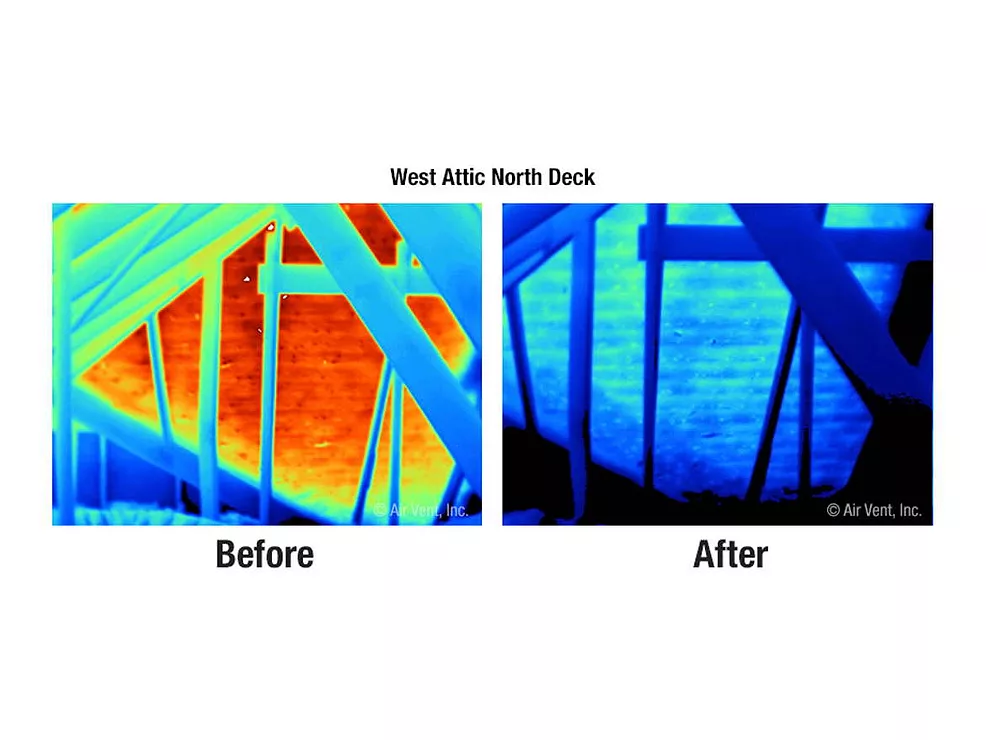Roof System Design Standards
The responsibility of deciphering the standards and determining how and where they apply in the design documents is the responsibility of the specifier. Simply providing a statement such as “comply with the (standard)” is inadequate if it does not provide the exact design standard requirements for the system. For instance, in the case of Factory Mutual wind uplift requirements, the specifier should go beyond the statement “apply in accordance with FM 1-90” and state the required attachment method for the specified deck and insulation components. This would include items such as providing the exact amount of fasteners required per square foot to comply with the standard. If this information is not clearly identified by the specifier, the contractor is forced to provide bids based on assumptions.
Deciphering the standards by the exact name and/or number is also a critical issue. Most of the standards have several different classifications. For example the statement “complete the metal coping in accordance with NRCA details” is vague and confusing due to the fact that there are several variations of this type of detail. The specifier should state the exact standard or be prepared to allow contractors to complete the detail based on their own interpretation. This type of practice could lead to inaccurate bids (each contractor’s interpretation will be different), job-site disputes, change orders, confrontations between the specifier and the contractor and — in the end — an unsatisfied building owner. The specifier must determine the standards that apply to the roof system, list them in clear and concise language and — where necessary — define the methods required to meet the standards during installation.
Although the responsibility of determining the design standards for the roof system is placed on the specifier, the contractor should have a basic understanding of the standards and why and where they are required. The most prominent standards used in roof system design are ASTM International, Factory Mutual (FM), Underwriters Laboratories (UL), and various details from manufacturers’ literature, NRCA or SMACNA.
ASTM International
Founded in 1898, ASTM International is a not-for-profit organization that provides a global forum for the development and publication of voluntary consensus standards for materials, products, systems and services. More than 30,000 individuals from 100 nations are the members of ASTM International. They are producers, users, consumers and representatives of government and academia. In over 130 varied industry areas, ASTM standards serve as the basis for manufacturing, procurement and regulatory activities. Formerly known as the American Society for Testing and Materials, ASTM International provides standards that are accepted and used in research and development, product testing, quality systems, and commercial transactions around the globe.In the roofing and waterproofing industry, ASTM committees are comprised of industry volunteers (predominately material manufacturers and producers) who outline the test methods and standards for material specifications. The ASTM standards referred to in bidding documents are specifically related to component materials. Most roofing and waterproofing materials have minimum ASTM requirements with which they must comply.
ASTM standards have reference numbers for indication. All the standards in the roofing and waterproofing division begin with the letter D, followed by the standard number and the year of origin of the standard. Changes or modifications to the standards are denoted with the year of revision in parenthesis after the original year. For example D4-86 (1998) Standard Test Method for Bitumen Content.
The ASTM standards are classified in three categories: standard specifications, standard test methods and standard practices. The standard specifications provide the minimum specifications with which a material must comply in order to meet the standard. Some of the newer materials, such as TPOs and SBS, do not have ASTM standards at this time. Since the organization relies on volunteers and since most of the participants are representatives of material manufacturers (who have a vested interest in the requirements), development or revision of the standards follows the same chain as a legislative bill passing through Congress.
In bidding documents, it is the standard specifications that should be referenced. If the specifier erroneously submits a standard test method in the materials section of the bid documents, the contractor should clarify that material testing is not required. Test methods and practices may be provided in the execution section of the bidding documents if the specifier requires quality assurance testing. Typically, test methods are used in forensics evaluations of applied materials. It is the responsibility of the specifier to verify that designed materials meet or exceed the ASTM standard’s specifications.
Factory Mutual Requirements
The Factory Mutual Engineering Corp. has published “Loss Prevention Data for the Roofing Contractor,” which provides guidelines for installation of roof systems to prevent substantial damage from severe weather. The established testing and standards were developed from millions of dollars paid in insurance claims from roof damages that occurred due to the elements. As an insurance company, FM Global holds a vested interest in decreasing these types of failures.In addition to the design standards, FM also conducts testing to approve materials and systems. The materials and systems are tested (for a fee) to meet wind-uplift and fire standards. The membranes are typically tested in system configurations over different deck types and by using different insulations. FM charges a separate fee for all tests and each system configuration must pass on its own for individual certification.
The specifier must determine that the proposed system has passed FM in the exact configuration as the specification. The approvals are based on systems, not separate components. FM design standards and testing procedures have been adapted as acceptable in the roofing industry.
Most of the materials and systems require FM approval prior to market entry. However, not all of the roof systems on the market today have FM approval. For instance, loosed-laid-ballasted single-ply systems are not FM-approved, but these systems are frequently installed.
Prior to design, the specifier should indicate whether the building owner is insured by FM Global. Companies that are insured by FM must comply with the design standards set forth in the “Loss Prevention” guidelines using FM-approved roof systems. FM periodically inspects insured facilities to ensure compliance to the standards and often reviews design documents for compliance on new and remedial construction projects.
Although FM provides loss prevention standards for fire, hail and roof loads, the organization is most recognized for wind-uplift testing. The total roof system must be designed to comply with the standards at insulation and membrane attachment and at all perimeter flashings.
Clarifications
There are two common misconceptions associated with the FM wind-uplift classifications. The first involves the number 1: The classification denotation is the numeral “1,” not the letter “I” as it is frequently referred to. Therefore, the correct pronunciation is FM Class 1-60 not FM I-60.The second misconception is what the uplift classes actually mean. The common misconception is that Class 1-60 can withstand 60-mile an hour wind speeds. This is incorrect. The determination is actually based on pounds per square foot of pressure that the system can withstand. This is determined during testing procedures. In this process, the complete roof system — including the deck — is secured to the frame of the wind-uplift test apparatus. During the test procedure, compressed air is slowly introduced below the deck in increments of 15 psf. If the sample maintains 60 psf for one minute without damage, it is classified as Class 1-60. The same procedure applies for Class 1-90, which must maintain 90 psf for one minute and Class 1-120, which must maintain 120 psf for one minute.
The procedure to determine wind-uplift classifications on specific buildings during the design phase is based on a calculation that takes into account the basic wind speed in the geographical area, ground surrounding the building, and the roof-uplift pressure at the field of the roof. The building’s height and perimeter construction is also considered. It is the responsibility of the specifier to complete these calculations and to determine the proper wind-uplift classification for the building.
As Per Manufacturers Literature, NRCA, SMACNA, ANSI, etc.
Compliance to manufacturers’ requirements is important particularly because of the fact that the manufacturer will be required to provide a warranty for the project. However, it is the specifier’s responsibility to determine the design issues that best meet the requirements of the building. After all, the specifier has, in theory, actually investigated the building and is aware of the as-built conditions that may not be covered in manufacturer’s literature or generic details. The generic details may not adequately illustrate actual field conditions. Furthermore, simply copying a detail from a book does not constitute true design.Manufacturer’s literature, NRCA details and all other industry organizations can serve as guidelines for design and the specifier should be aware of the requirements established by these organizations. However, the design should be completed to best meet the requirements of the building — even if they are more stringent than industry requirements.
In conclusion, design standards are important for proper roof application. It is the responsibility of the specifier to determine the exact standards that are required for each building and to properly define the requirements of the standards so that the contractor can comply during installation. The contractor should also have a broad knowledge of the standards. If properly designed and followed during installation, the standards can help ensure a successful roof project, with few problems in the future to help the contractor’s bottom line.
Looking for a reprint of this article?
From high-res PDFs to custom plaques, order your copy today!




